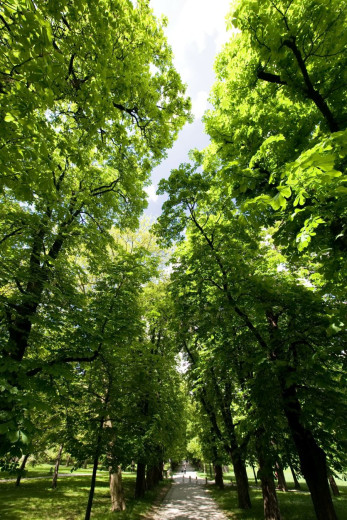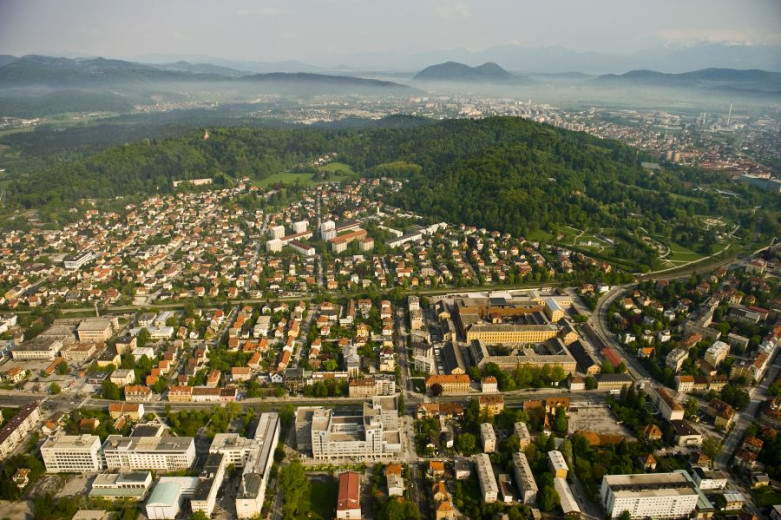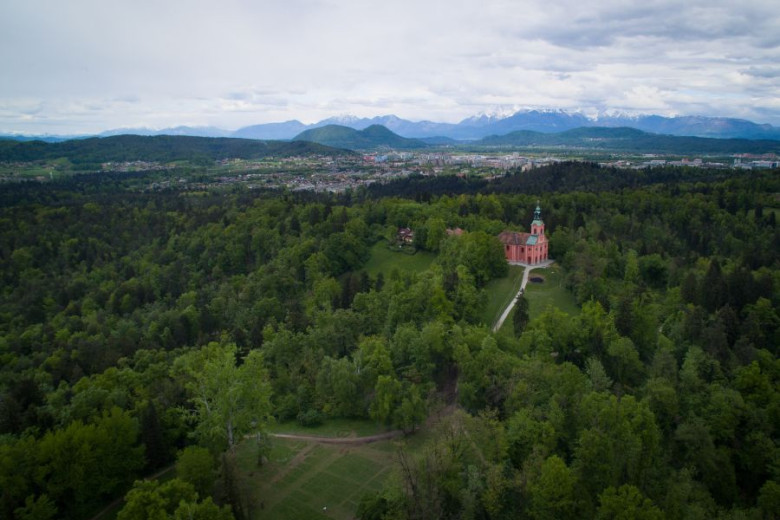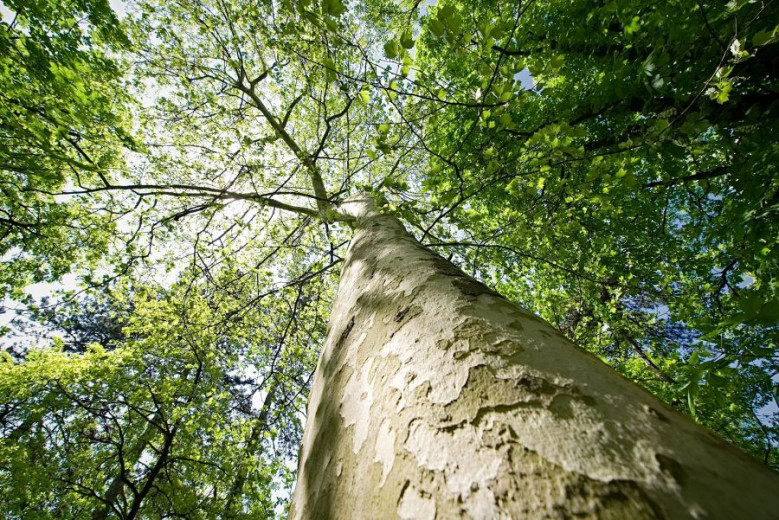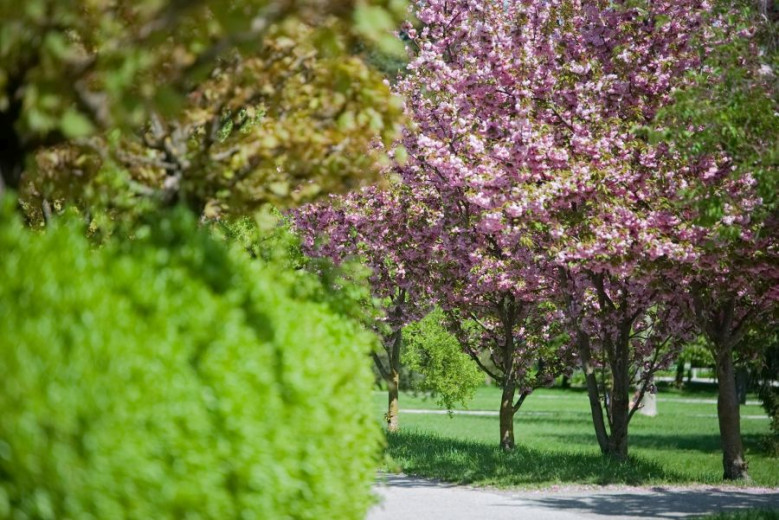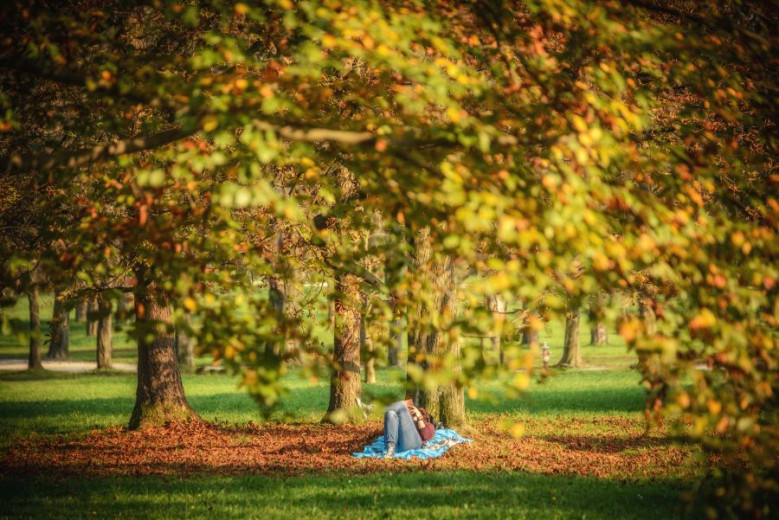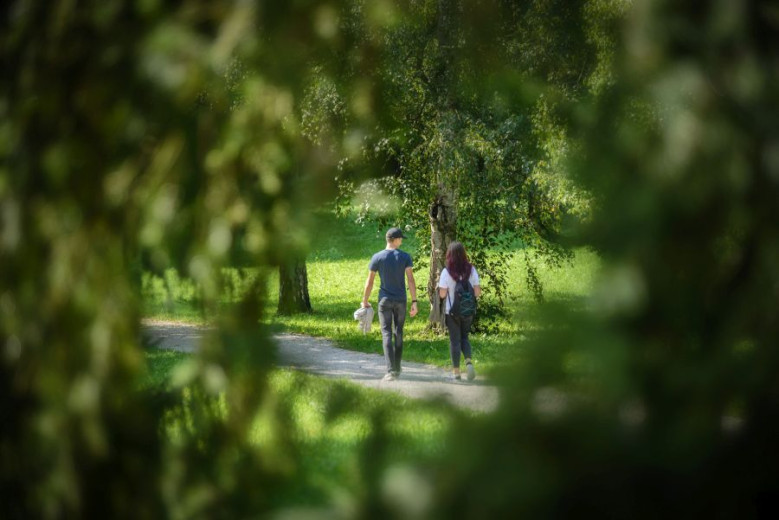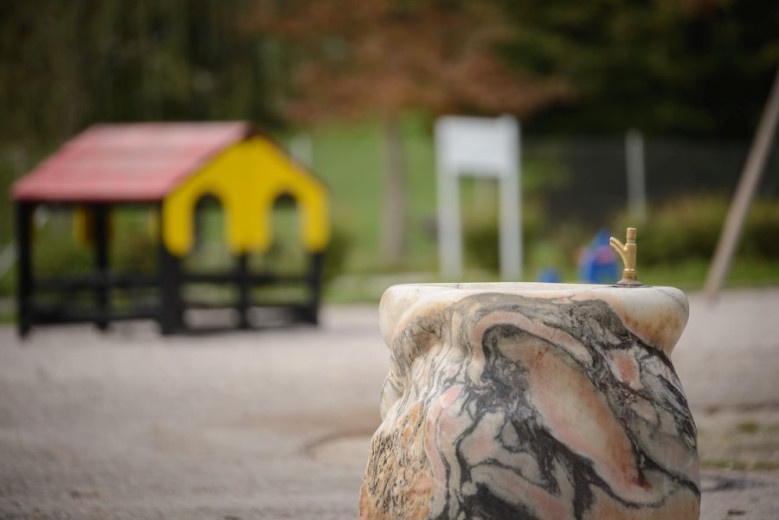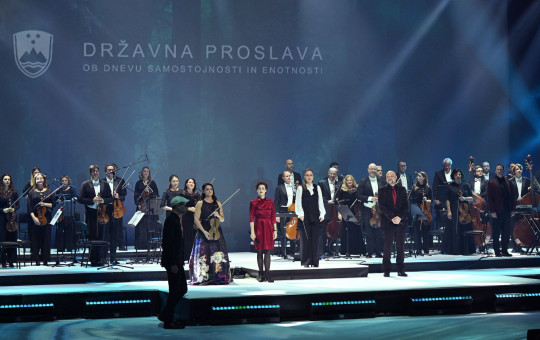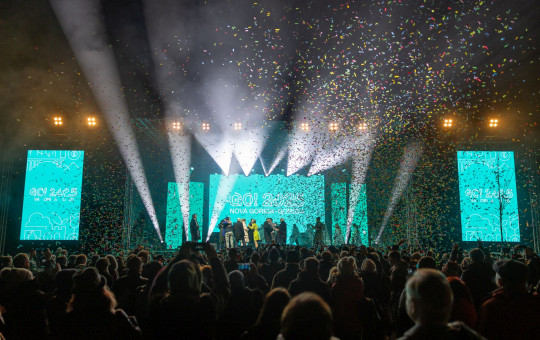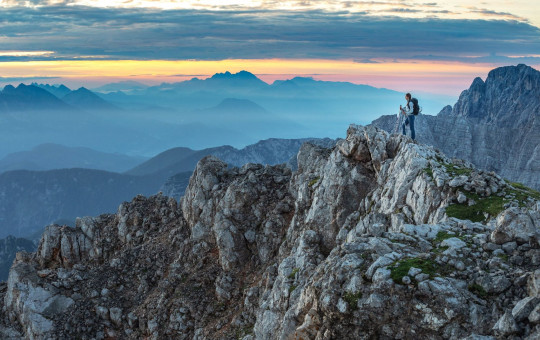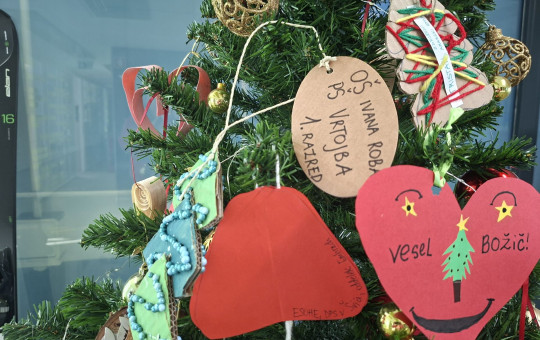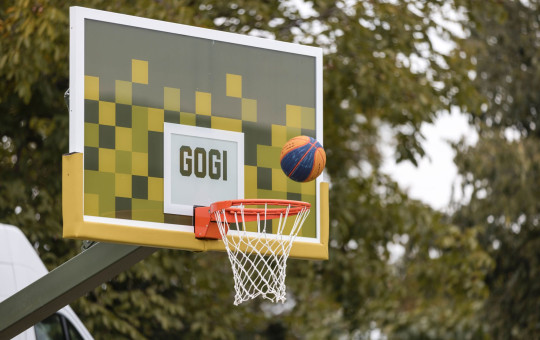Date: 20. September 2024
Time to read: 3 min
The landscape park is known for its two seemingly separete parts – Tivoli Park and forest. They are complemented by species-rich meadow, wetland and water ecosystems. Tis is a place where nature is connected to culture and where sports and other leisure activities are closely intertwined.
Let's begin the story about Tivoli park with an interesting question! Did you know that Tivoli , Rožnik and Šiška hill lanscape park is bigger as New York City's Central Park (341 hectares)and London's Hyde Park (140 hectares)? Whereas Tivoli, Rožnik and Šiška Hill Landscape Park comprises 459 hectares.
Tivoli Park has interesting history and reach cultural heritage
A wider area of Tivoli, Rožnik and Šiška Hill Landscape Park was first mentiond in connection with a water supply system built in the 2nd century, which supplied Emona with water.
Later France had a huge impact. Ljubljana found itself under French occupation and become the capital of Napoleon's Illyrian Provinces, which streched from Tyrol all the way present-day Montenegro. It was during that time that the authorities decided to create a new park in their new regional capital.
The park was designed in 1813 French engineer Jan Blanchard. He used the gardens of two Ljubljana mansions as the basis for the park.
He designed tree-lined lanes and flower gardens, but the park got its present appearance gradually. One of the first major additions came in 1880, when a fish pond was constructed in the southern part of the park. The pond was soon followed by an adjacent tropical greenhouse, and both features continue to draw visitors to Tivoli.
Architect Jože Plečnik designed the present appearance of the park in 1920 and ´30s. He designed Tivoli's central promenade, adorning it with his characteristic, neo - classical lampposts.
The architect wanted to connect the city Ljubljana into a whole by combination of street axes, and the creation of charming vantage points and parks. He had lot's of ideas also for the Tivoli Park.
-
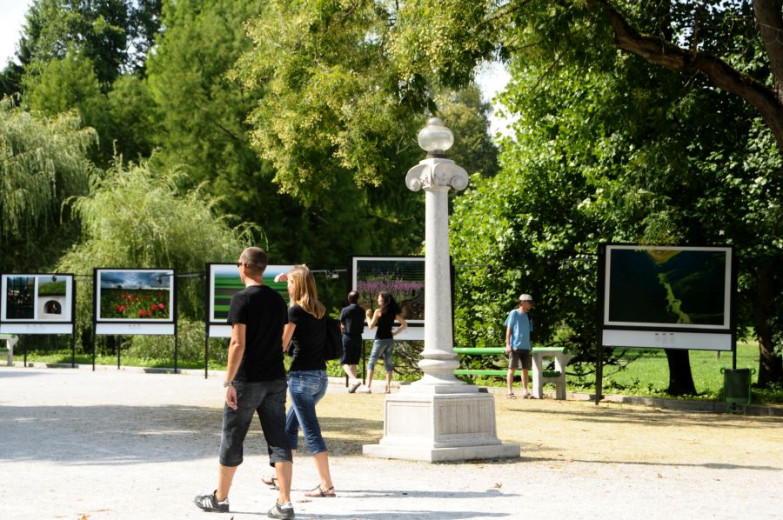 The Jakopič Promenade, also known as the Plečnik Promenade, in Ljubljana's Tivoli Park is often the venue exhibitions. Photo: Dunja Wedam
The Jakopič Promenade, also known as the Plečnik Promenade, in Ljubljana's Tivoli Park is often the venue exhibitions. Photo: Dunja Wedam
-
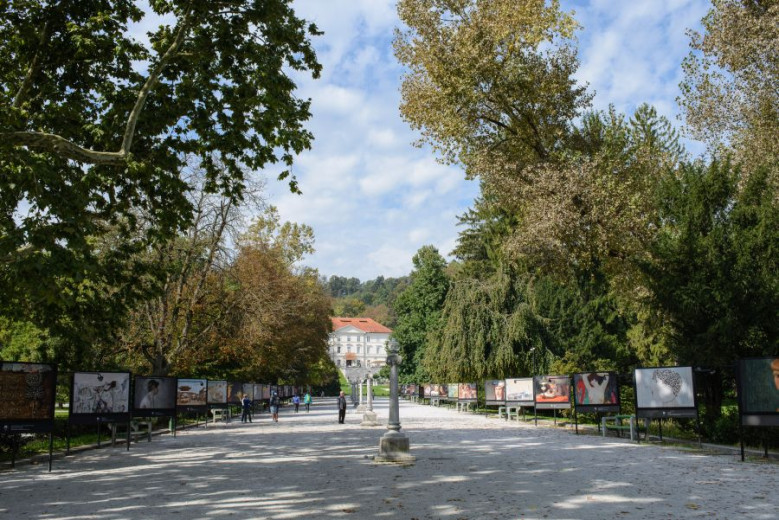 The Jakopič Promenade, is one of Plečnik's most important works. In 2009, was declared a cultural monument of national importance. Photo: Artinfo
The Jakopič Promenade, is one of Plečnik's most important works. In 2009, was declared a cultural monument of national importance. Photo: Artinfo
-
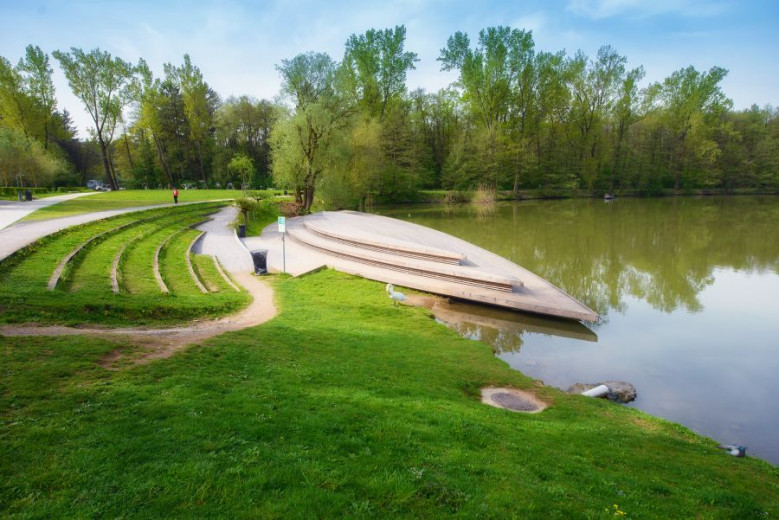 Koseze Pond is la home of mallards, common moorhens, dragonflies and mute swans. Photo: Artinfo
Koseze Pond is la home of mallards, common moorhens, dragonflies and mute swans. Photo: Artinfo
Tivoli also houses many cultural attractions including the International Centre of Graphic arts which is housed in the marvellous 17th century Tivoli Mansion. In the park you can find also the Museum of Modern History and the cit's zoo.
There are few cultural monuments of national importance: aside Plečnik Promenade also Cekin Mansion, Triangular Park, location of the summer theatre in Tivoli. You can take a look also at 23 other cultural heritage units (Boy with a Fish, Shepherd, Ivan Cankar Monument at Rožnik Hill, Visitation of Mary Church at Rožnik Hill, etc). Cultural monuments of local importance are: Cankar Memorial Room at Rožnik Hill, Tivoli Hotel, Memorial plaque to the Founding Congress of the CPS, Monument to the Pioneers, Monument to the Miner, Archaeological site of Ljubljana.
-
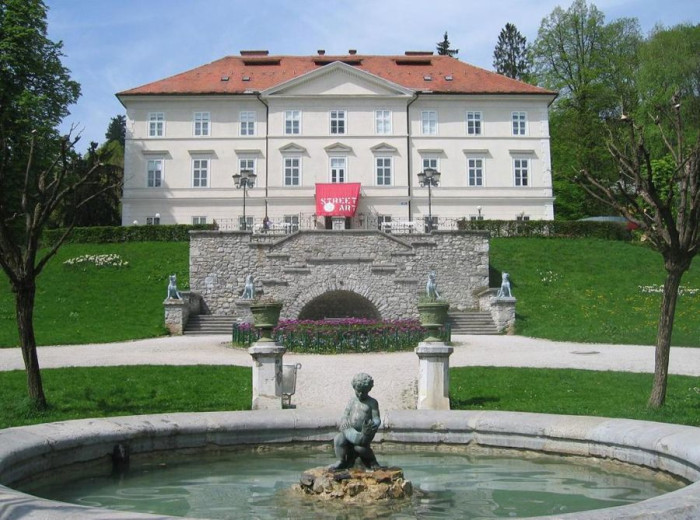 Tivoli Mansion: Imternational Centre of Graphic Arts. Photo: Wikipedia
Tivoli Mansion: Imternational Centre of Graphic Arts. Photo: Wikipedia
-
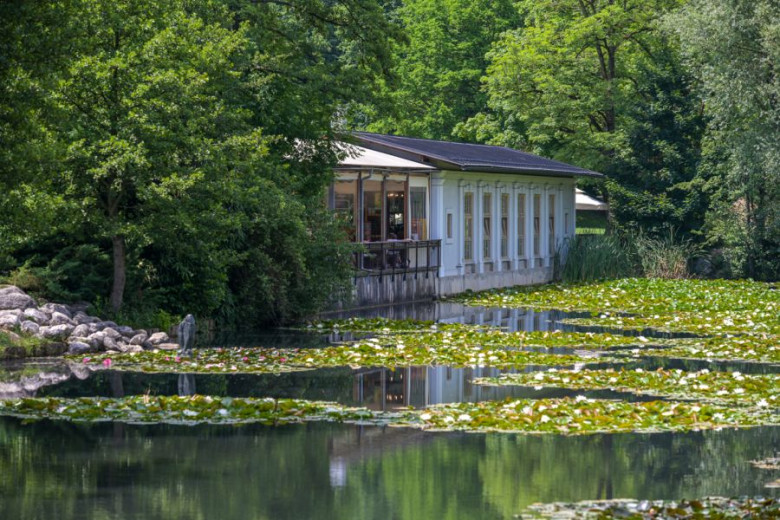 Set beside a pond in Tivoli park this popular café Čolnarna it's calm oasis walking distance from the city centre. Photo: Andrej Tarfila
Set beside a pond in Tivoli park this popular café Čolnarna it's calm oasis walking distance from the city centre. Photo: Andrej Tarfila
-
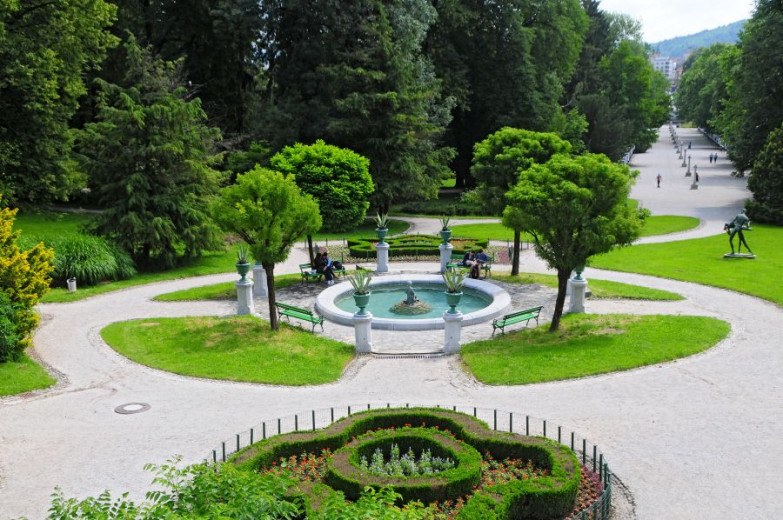 The fountain Deček z ribo (Boy with a Fish), a 1989 reconstruction of a Baroque fountain from 1870. Photo: Dunja Wedam
The fountain Deček z ribo (Boy with a Fish), a 1989 reconstruction of a Baroque fountain from 1870. Photo: Dunja Wedam
-
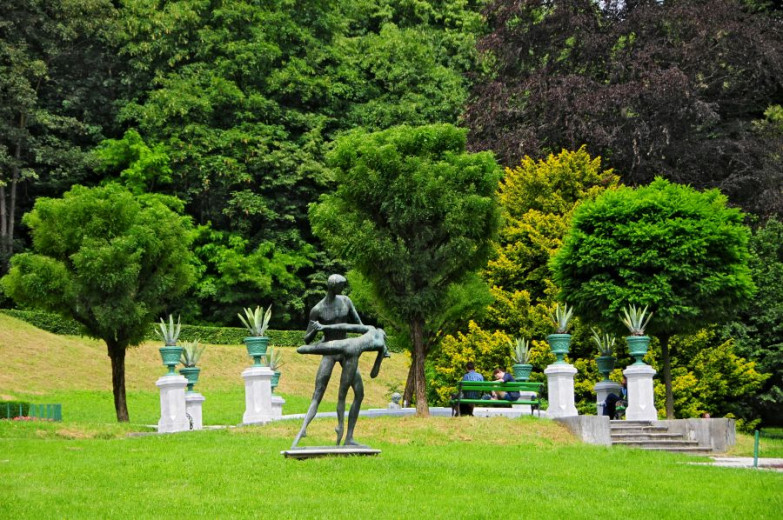 Statue of ballet dancers. Photo: Dunja Wedam
Statue of ballet dancers. Photo: Dunja Wedam
-
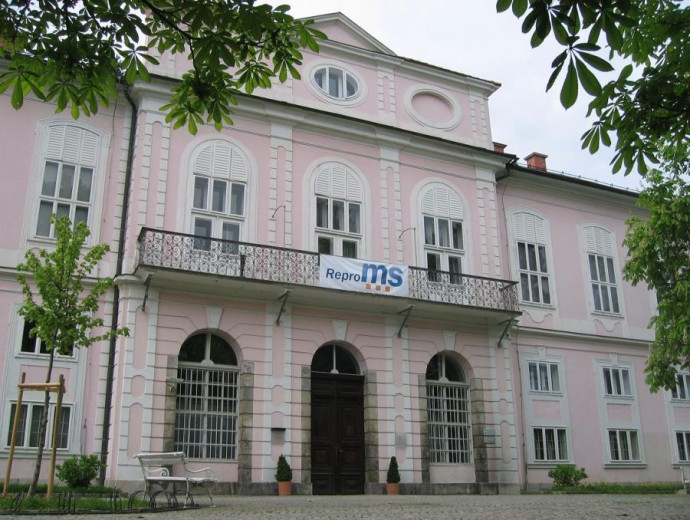 The National Museum of Contemporary History you will find in Cekin Castle. Photo: Wikipedia
The National Museum of Contemporary History you will find in Cekin Castle. Photo: Wikipedia
The nature of the landscape park is exceptional. The area is home to 700 different species of plants, 500 species of butterflies, 1250 species of fungi, 110 species of beetles, 100 species of birds ( 70 of which are a nesting birds), 50 species of spiders, 45 species of dragonflies, 25 species of mamals (9 of them are bat species), 11 species of amphibians, 2 species of crustaceans.
A greenhouse with tropical plants stands near the northwestern end of the pond. Next to the greenhouse, ther's a rose garden. Over 160 types of roses, including the first Slovenian cultivar, Prešeren, were added in 2010.
-
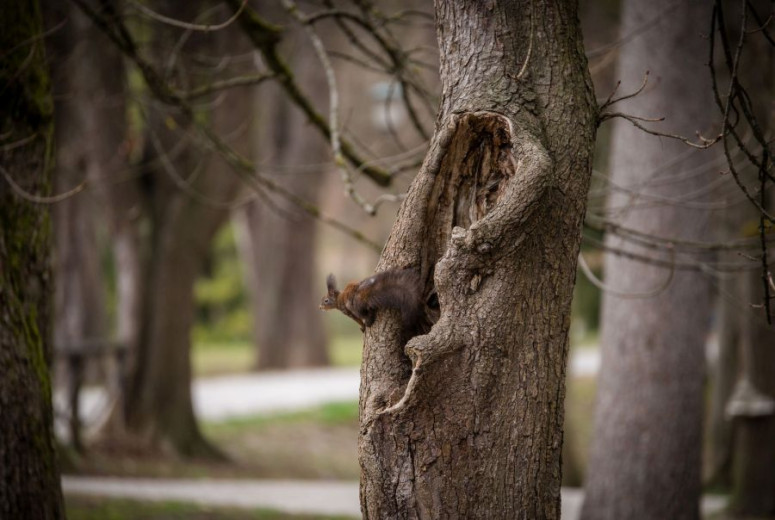 Tivoli park is home to many squirrels. Photo: Artinfo
Tivoli park is home to many squirrels. Photo: Artinfo
-
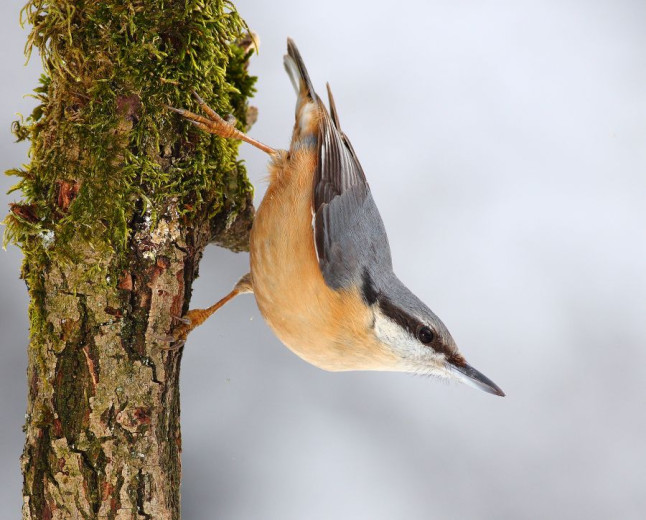 These woods are home also for Sitta europaea. Photo: Davorin Tome
These woods are home also for Sitta europaea. Photo: Davorin Tome
-
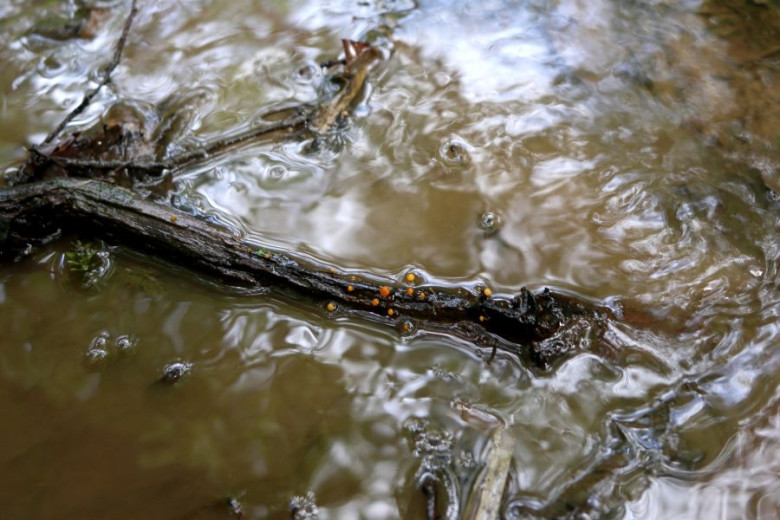 The area of clean and slowly flowing water is the ideal habitat for water club mushroom. Photo: Luka Sparl
The area of clean and slowly flowing water is the ideal habitat for water club mushroom. Photo: Luka Sparl
-
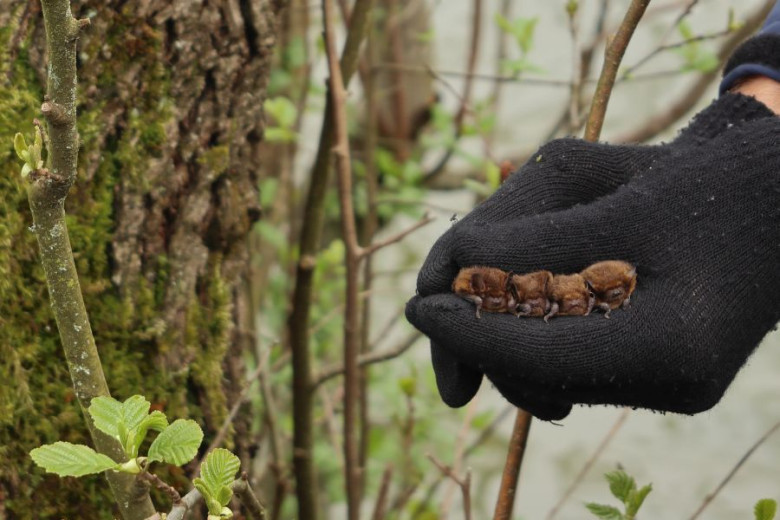 Bats are fascinating animals. Photo: Luka Sparl
Bats are fascinating animals. Photo: Luka Sparl
-
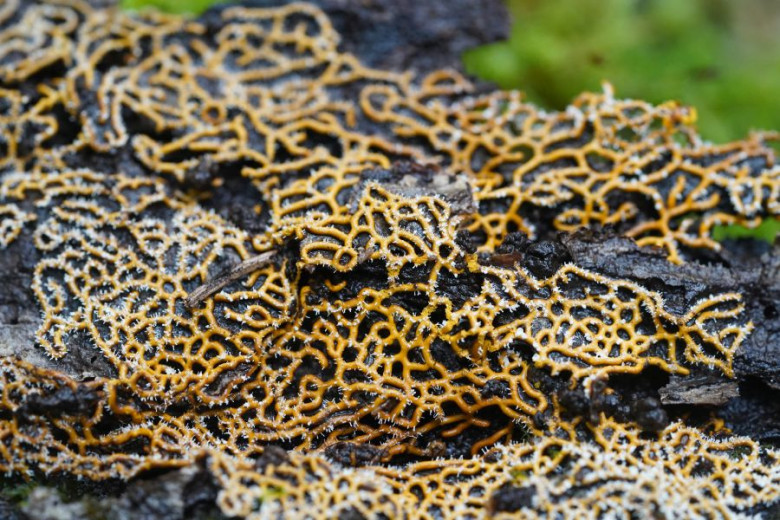 Hemytrichia serpula Photo: Luka Sparl
Hemytrichia serpula Photo: Luka Sparl
-
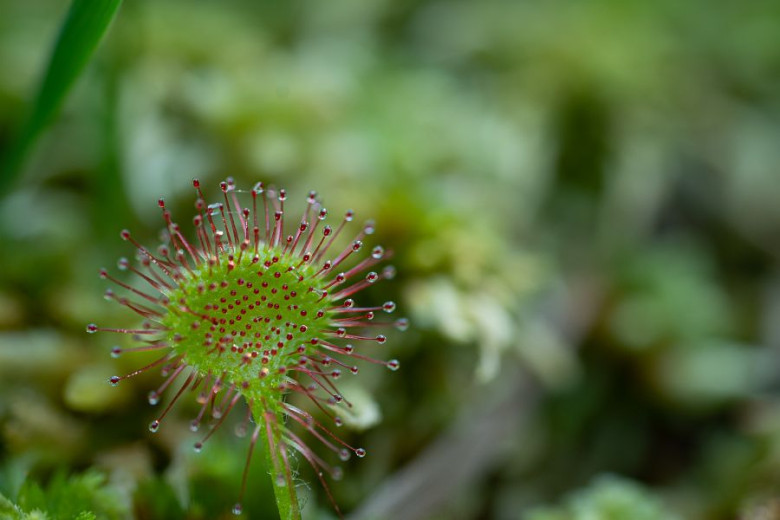 Drosera rotundifolia Photo: Luka Sparl
Drosera rotundifolia Photo: Luka Sparl
-
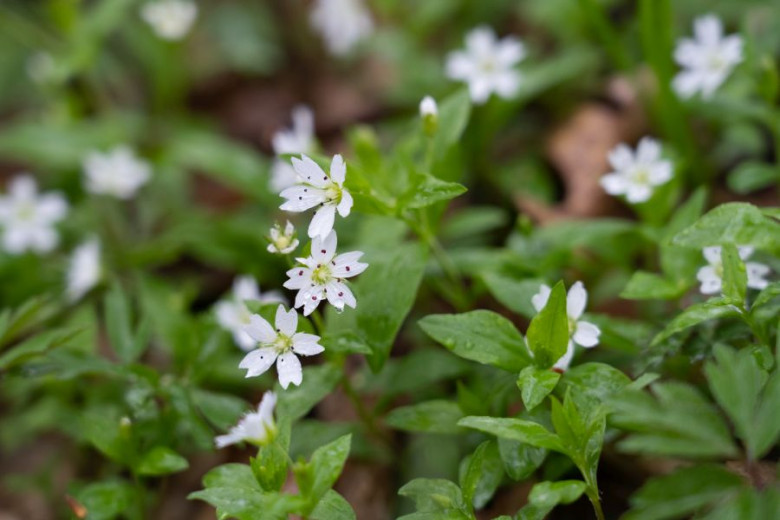 Pseudostellaria europaea Photo: Luka Sparl
Pseudostellaria europaea Photo: Luka Sparl
-
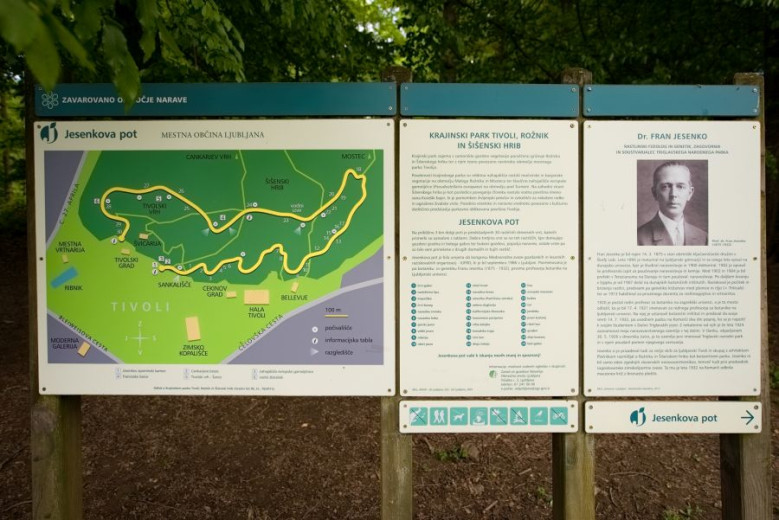 Jesenko Trail Photo: Artinfo
Jesenko Trail Photo: Artinfo
-
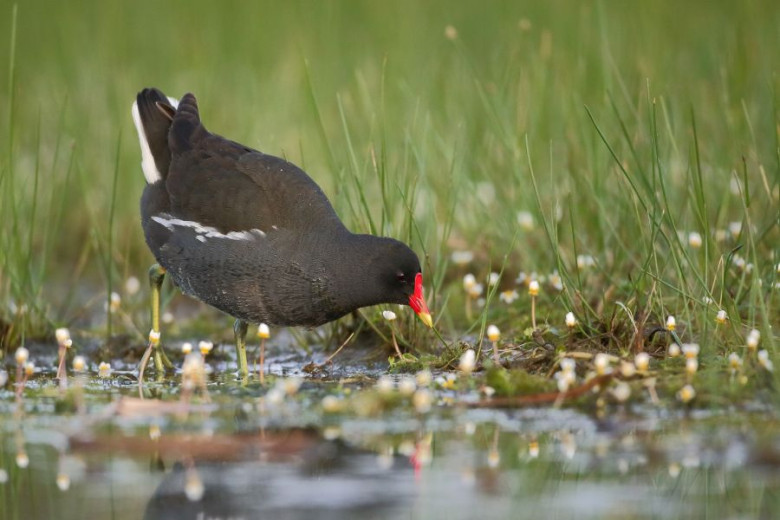 Gallinula chloropus Photo: Davorin Tome
Gallinula chloropus Photo: Davorin Tome
-
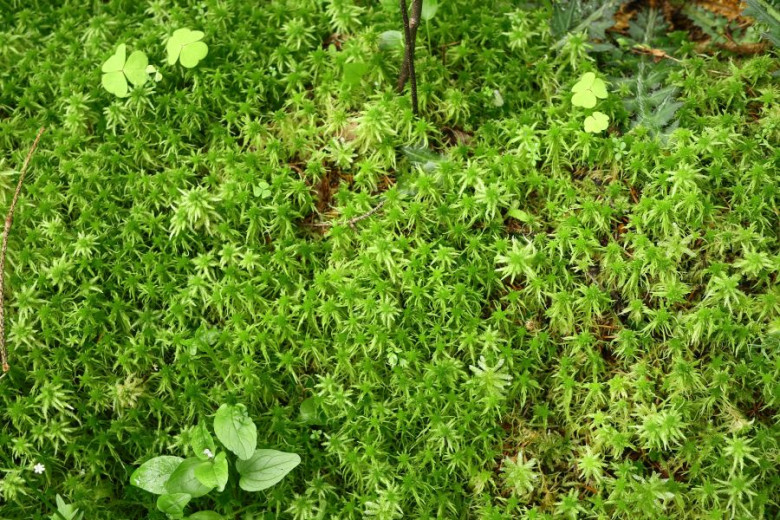 Sphagnum moss or quacker moss. Photo: Luka Sparl
Sphagnum moss or quacker moss. Photo: Luka Sparl
-
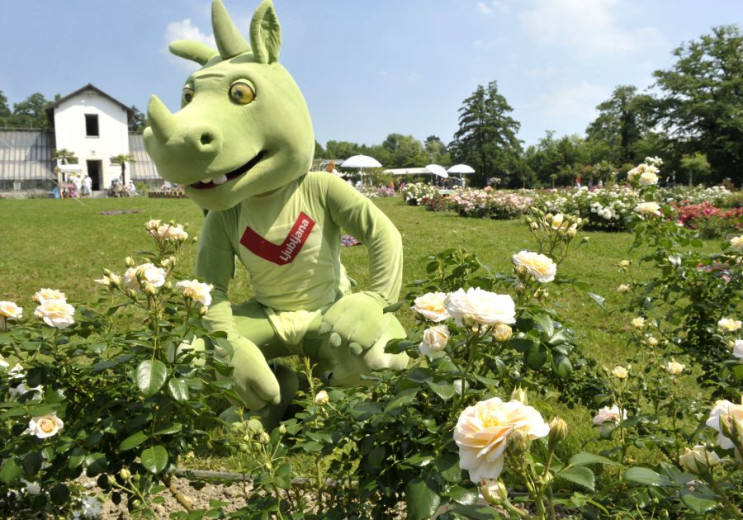 In rose garden you can admire also Ljubljana rose. Photo: City of Ljubljana archive
In rose garden you can admire also Ljubljana rose. Photo: City of Ljubljana archive
It's a perfect place for everybody
Would you like to have a pleasant day? Are you interested in sightseeing in Ljubljana or would you prefer a walk through the forest while enjoying the birdsong? Do you need a pleasant place for a run? Or perhaps you’d like to have a coffee by the lake? Would you like to play with your children somewhere far from but still close to the city center? Tivoli Park offers all of this. Don’t forget to visit it when you come to the Slovenian capital.
Sourse for the article: Treasures in the middle of the city

